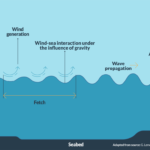Renewable materials are resources that can be replenished naturally over time. They are often considered sustainable due to their regenerative nature.
Embracing renewable materials is crucial for sustainable development, as they significantly reduce the strain on non-renewable resources, such as fossil fuels and minerals. With the planet facing resource depletion and environmental challenges, renewable materials offer an alternative that supports economic growth while minimizing ecological footprints.
They include plant-based products, like wood and cotton; animal-derived goods, such as wool; and other naturally occurring substances that can be regenerated at a pace rivaling or surpassing their consumption rates. Transitioning to renewable materials is not just eco-friendly; it’s a strategic move towards a more resilient and circular economy. Through smart design and conscious consumer choices, these materials can help drive industries toward a future where economic development aligns with environmental stewardship.

Credit: www.amazon.com
Renewable Materials Unveiled
Imagine using materials that never run out. That’s the magic of renewable materials. These are things we can use over and over. They come from sources that nature quickly replaces. Let’s dive into this world where sustainability is king.
Defining Renewable Resources
Renewable resources are gifts from Earth that keep on giving. They renew themselves naturally. Fast enough for us to use them without running low. Some come from plants, others from the ground. They all share one thing: endless availability with the right care.
These materials thrive on sustainability. The earth can replenish them in a short time. So, we never have to worry about using them up. Bold renewable resources are the heroes in our story of sustainable living.
Distinct Types Of Renewable Materials
Renewable materials come in many shapes and sizes. Here’s a peek at some you might know:
- Wood: Grows back when we plant more trees.
- Bamboo: A super-fast grower that’s also super versatile.
- Cork: Harvested from bark, the tree keeps living.
- Wool: Sheep give us wool and then grow more.
- Bioplastics: Made from plants, not oil, they’re Earth-friendly.
These materials are stars in the eco-friendly universe. They allow us to make all sorts of things. Without the guilt of harming the planet. They stand strong against waste and pollution. And they invite us to be part of the solution.
| Material | Source | Renewable |
|---|---|---|
| Wood | Trees | Yes |
| Wool | Sheep | Yes |
Renewables change the way we think. About what we use and how. Kids, imagine a world where everything you touch helps the planet. That’s what renewable materials do. They make Earth a happy home. For us, animals, and plants.
The Importance Of Eco-friendly Choices
Making eco-friendly choices matters now more than ever. Renewable materials are key to sustainability. They help preserve our planet. They also ensure resources for everyone’s future.
Environmental Impacts
Renewable materials reduce harm to the environment. Traditional materials often deplete resources. This can harm wildlife and ecosystems.
- Lower carbon emissions: Using renewables leads to fewer greenhouse gases.
- Conservation: Renewables conserve non-renewable resources.
- Less waste: These materials are often more biodegradable.
Benefits For Future Generations
Choosing renewables is not just about us. It’s about our kids and their kids. Our choices shape their world.
| Benefits | Impact |
|---|---|
| Sustainable living | Resources exist for the future. |
| Cleaner environment | Healthier lives for our descendants. |
| Innovation | New jobs and technologies emerge. |
Examples And Uses Of Renewable Materials
Renewable materials come from resources that regrow or replenish over time. These materials help us build a sustainable future. They replace non-renewable options that can harm our planet. Let’s explore how these materials are changing the game in construction, consumer products, and energy production.
In Construction
Rapid growth in the building sector calls for sustainable solutions. Renewable materials here include:
- Bamboo: strong like steel, grows back quickly
- Recycled Steel: reduces the need for new ore
- Cork: good for floors, comes from tree bark
Builders now choose these for greener homes and buildings.
In Consumer Products
Eco-friendly products use renewable materials. They lessen waste and pollution. Examples are:
- Bioplastics: from plants, not oil
- Organic Cotton: free from harsh chemicals
- Wool: natural fiber, keeps you warm
Such materials are in toys, clothes, and more. They offer a cleaner choice for consumers.
In Energy Production
Renewable materials are key in producing clean energy. They come from nature’s forces. Look at these:
| Material | Use |
|---|---|
| Biofuels | Power for vehicles |
| Wood Pellets | Heating and electricity |
| Solar Panels | Sunlight to electricity |
These renewable sources drive turbines and power homes.

Credit: ugreen.io
Comparing Renewable And Non-renewable Materials
In the quest for sustainability, understanding materials is key. Renewable materials come from sources we can grow again. Trees and plants are good examples. Non-renewable materials, like oil and minerals, can’t be re-grown. They are finite. This section dives into how we measure and compare these materials.
Life Cycle Assessment
A Life Cycle Assessment (LCA) is a method to measure a product’s environmental impact. It considers the whole life of a material. That includes extraction, processing, use, and disposal. To compare renewable and non-renewable materials, LCA considers many factors:
- Source of the material
- Energy used to collect and transform it
- Its life span
- End-of-life disposal methods
Renewable materials often show better scores in LCA. That’s because we can grow or produce them with less harm to the environment.
Sustainability Index
A Sustainability Index helps us know how “green” a material is. The index uses points or ratings. More points mean the material does less harm to nature.
Materials from nature, like bamboo or wool, score high. They can go back into the earth safely. Materials like plastic, which come from oil, score lower. They can harm the planet when we throw them away.
Cost Implications
When we think of cost, there’s more than money to consider. Cost Implications also think about the environment and our future.
| Material Type | Financial Cost | Environmental Cost |
|---|---|---|
| Renewable | Many times, more affordable in the long term | Tends to be lower |
| Non-Renewable | May seem cheaper upfront | Often higher due to damage to the environment |
Renewable materials can save money and the earth. While some non-renewables are cheaper now, they may cost us more later on.
Challenges In Adopting Renewable Materials
Exploring the potential of renewable materials is pivotal in our shift towards a sustainable future. Despite the benefits, their widespread adoption faces significant challenges. These hurdles range from technological gaps to market and regulatory constraints.
Technological Barriers
Innovating renewable materials requires sophisticated technology. This often involves a hefty investment in research and development. As new materials emerge, scale-up challenges also arise. Achieving mass production that is both efficient and cost-effective is no simple feat.
- High upfront costs for research and equipment
- Difficulty in maintaining quality and consistency over large batches
- Lack of advanced manufacturing facilities in many regions
Market Acceptance
Consumer and industry preference for conventional materials can slow renewable material adoption. Traditional materials often benefit from established supply chains and lower prices due to economies of scale.
- Renewable materials must compete with well-established products
- Changing perception requires effective communication and education
- Performance and durability concerns can deter potential adopters
Policy And Regulation Hurdles
Appropriate policy frameworks are essential for supporting innovation in renewable materials. However, regulatory processes can be slow, often lagging behind technological advancements.
| Challenge | Impact |
|---|---|
| Complex certification processes | Delays market entry |
| Lack of incentives for companies | Reduces motivation to innovate |
| Inconsistent regulations across regions | Creates barriers to international trade |
Despite these challenges, the transition to renewable materials is an essential step for sustainable development. Overcoming these hurdles will require a collaborative effort among stakeholders in technology, market dynamics, and policy enactment.

Credit: www.vogue.in
Moving Forward With Renewable Choices
We live in a world seeking sustainability in every aspect. Renewable materials stand front and center in this quest. Moving forward with renewable choices is not just an option anymore; it’s a necessity. These materials come from natural sources that can replenish over time. They include wood from responsibly managed forests, bamboo, organic cotton, and more. Making the shift to renewables greatly reduces environmental impact and supports a healthier planet.
Innovation In Material Science
New materials are rising from the lab benches to the marketplace, thanks to cutting-edge innovations. Scientists are transforming how we view and use materials. They’re creating substances that are not just renewable but also strong, durable, and versatile. For example:
- Bioplastics from cornstarch or sugarcane offer an alternative to petroleum-based plastics.
- Spider silk protein for textiles is now produced using fermented yeast.
- Algae-based materials replace synthetic dyes and chemicals.
The Role Of Consumers
Consumers hold immense power in their pockets. By choosing products made from renewable materials, buyers send a strong message to businesses. Demand for sustainable goods drives innovation and lowers prices. Steps consumers can take:
- Check labels for renewable material content.
- Prioritize products with minimal environmental footprints.
- Support companies committed to sustainability.
Government Incentives And Support
Nations worldwide are recognizing the importance of renewables. They are creating policies that encourage their use. Industries receive tax breaks, subsidies, and grants to make the transition smoother. This government push makes renewable materials more accessible and affordable. Key areas of support include:
| Area | Support Example |
|---|---|
| Research | Grants for developing new materials |
| Production | Tax incentives for using renewable resources |
| Consumption | Rebates for buying eco-friendly products |
Frequently Asked Questions For What Is Renewable Materials
What Are Renewable Materials?
Renewable materials are derived from resources that can replenish themselves naturally. They are sourced from forests, fields, and oceans, maintaining an ecological balance. Common examples include wood, bamboo, and bioplastics.
Why Are Renewable Materials Important?
Renewable materials reduce dependency on finite resources. They help combat climate change by sequestering carbon dioxide. Their sustainable nature supports long-term ecological health, promoting a greener economy.
How Do Renewable Materials Impact The Environment?
Renewable materials offer a lower environmental impact as they can regrow and decompose naturally. Their use minimizes waste, conserves biodiversity, and reduces greenhouse gas emissions as part of a circular economy.
Can Renewable Materials Replace Plastics?
Certain renewable materials, like bioplastics, can replace conventional plastics. They degrade faster and use less fossil fuel in production. However, scalability and economic viability are ongoing challenges for widespread replacement.
Conclusion
As we wrap up our exploration of renewable materials, one thing is clear: their significance cannot be overstated. Embracing these sustainable resources plays a crucial role in preserving our environment for future generations. It’s time to commit to materials that renew, recycle, and rejuvenate our planet.
Let’s make a difference, starting today.







